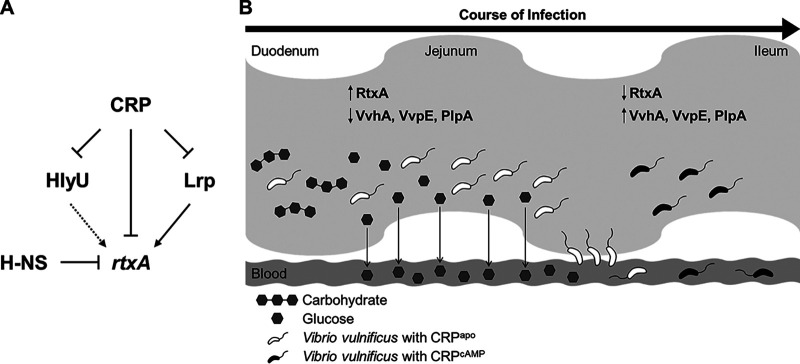FIG 9.
A regulatory network controlling the rtxA expression and a spatiotemporally differential expression of exotoxins in V. vulnificus. (A) A regulatory network comprising transcriptional regulators CRP, Lrp, HlyU, and H-NS controls rtxA expression. H-NS represses rtxA, and HlyU relieves the repression of H-NS. Lrp activates rtxA, while CRP represses rtxA directly and indirectly through the repression of lrp and hlyU in coherent feed-forward loops. (B) The V. vulnificus exotoxins may be expressed spatially and temporally as the bacteria move through the small intestine during the course of infection. In the early stage of infection, relatively high glucose levels in the duodenum and jejunum lead to the inactive form of CRP (CRPapo) and thereby prevent the CRP-mediated repression of rtxA. Thus, the expression of rtxA is predicted to be high, and the produced RtxA could contribute to the invasion of V. vulnificus from the small intestine to the bloodstream. In the later stage of infection, relatively low glucose levels in the ileum stimulate the synthesis of cAMP, resulting in the formation of active cAMP-CRP complex (CRPcAMP). Therefore, the expression of rtxA is decreased, and this decreased rtxA expression may be facilitated in response to other signals such as leucine at any rate (not shown). In contrast, the expression of vvhA, vvpE, and plpA is increased, causing further damage to host cells. This spatiotemporal and precise expression of the exotoxins will provide V. vulnificus with benefits in the pathogenesis during infection.

